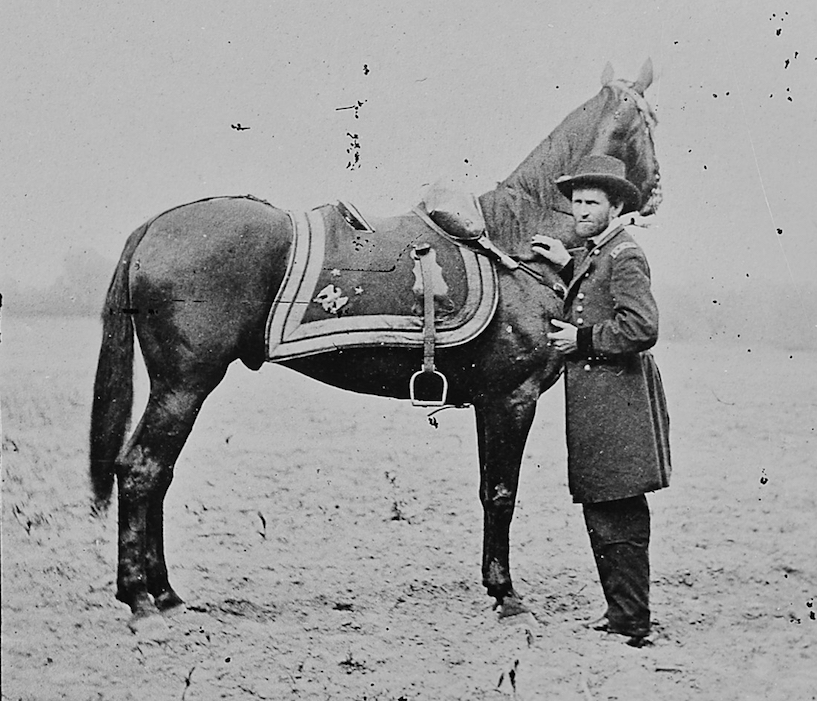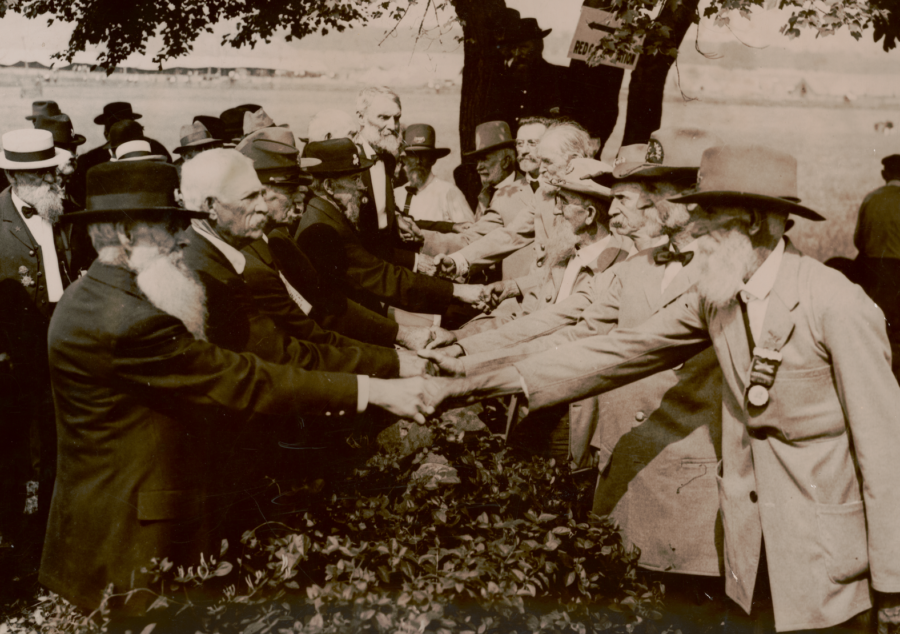While Ulysses S. Grant rode a number of horses during the Civil War, he was particularly attached to one of them: Cincinnati. According to Grant’s son Frederick, Cincinnati, who came from a distinguished lineage (his sire, Lexington, held the record as the country’s fastest four-mile Thoroughbred), had been given as a gift to the general shortly after the Battle of Chattanooga. Grant, who was an avid and skilled horseman, took quickly to his new chestnut-colored mount and considered him a favorite by the time the Overland Campaign began in 1864; according to Frederick, Grant called Cincinnati the “finest horse that he had ever seen.” Cincinnati proved to be a reliable war horse, able to remain even-tempered amid the noise of battle. Still, the Thoroughbred often seemed eager to enter the fray, as one Union officer observed: “In quietude this famous animal seemed gentle and spiritless, but the battle sounds stirred him with enthusiasm. No artist could paint the beauty of this horse in the midst of action, when the curb was required to hold him back.”

Grant, who would often be seen on Cincinnati during his campaigns against Robert E. Lee and the Army of Northern Virginia in 1864–1865, rarely allowed others to ride his prized horse. One exception was President Abraham Lincoln, who, according to Grant, “rode my horse Cincinnati every day” during his visit to the general’s headquarters at City Point during the war’s final month. Cincinnati would carry Grant to discuss the terms of surrender with Lee at Appomattox Court House and remain with him after the war (Grant having turned down an offer of $10,000 to sell him), before dying of old age on the farm of an old friend of Grant’s in Maryland. Shown here are Grant and Cincinnati on June 4, 1864, during the struggle for Cold Harbor.
